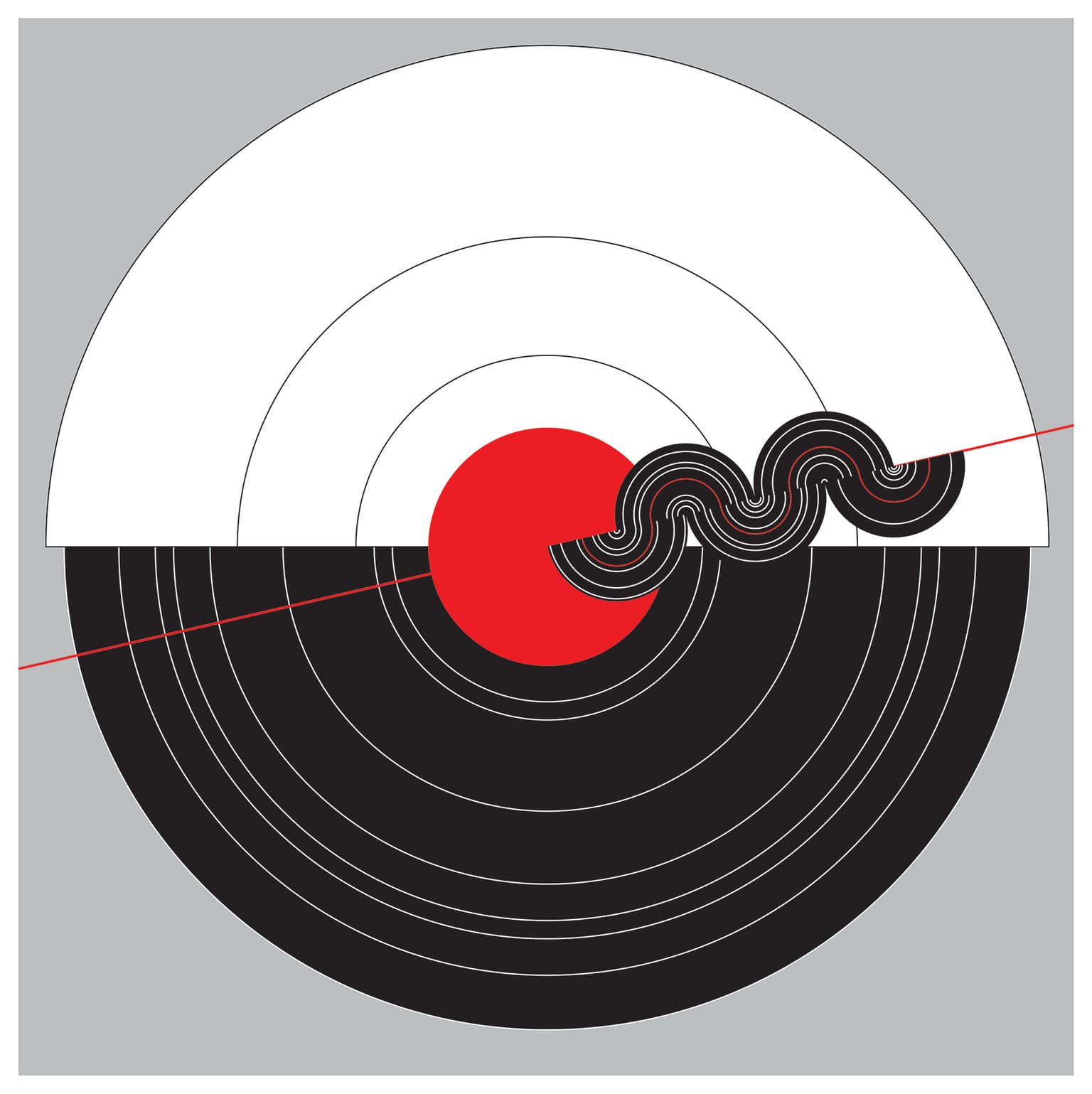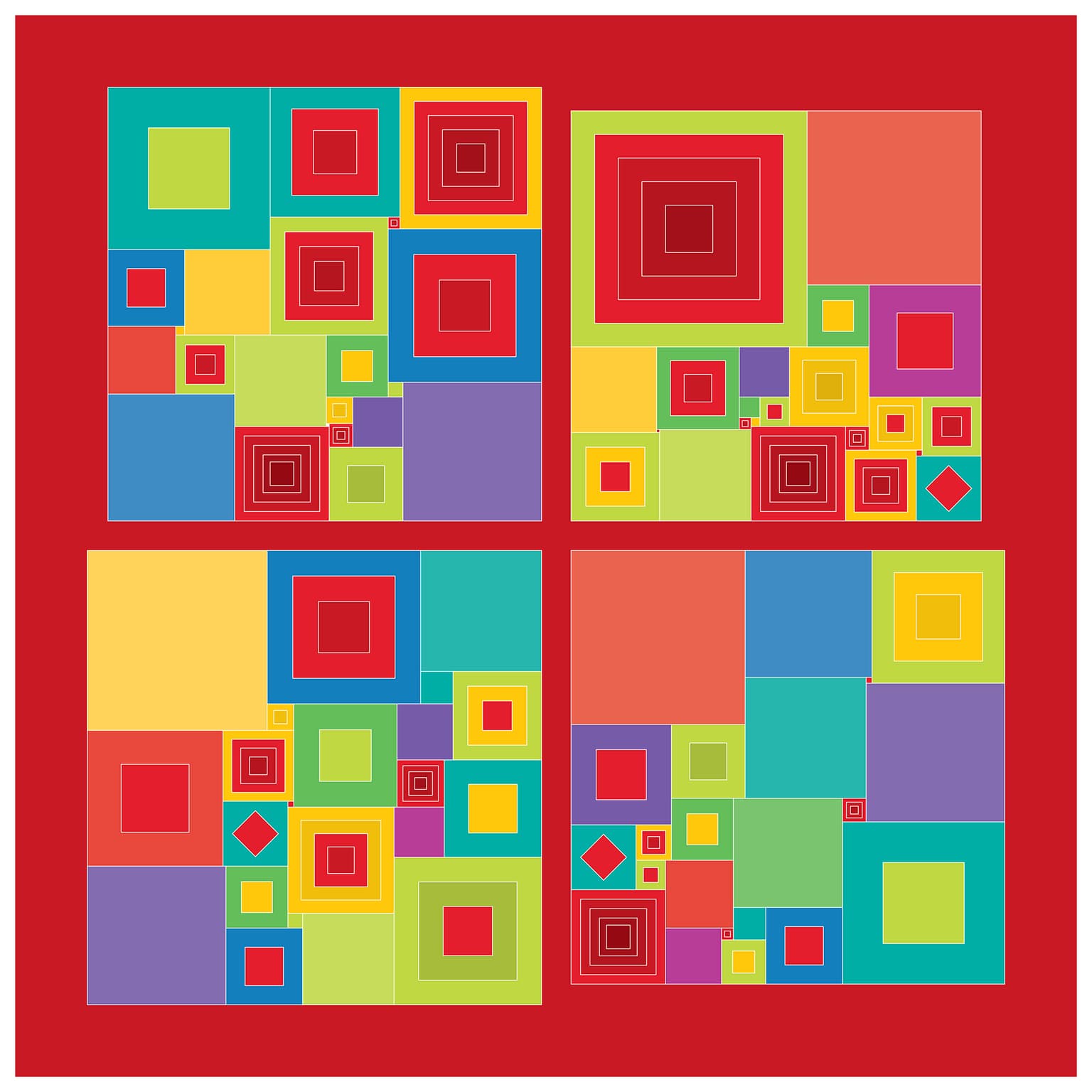2022 Joint Mathematics Meetings
Margaret Kepner
Artists
Margaret Kepner
Independent Artist
Washington, District of Columbia, USA
Statement
I enjoy expressing mathematical concepts through attributes such as color, geometric forms, and patterns. Recently, I have been experimenting with grids, tilings and geometric packing problems, as well as the patterns that can be found in integer sequences such as primes, triangular numbers, and Fibonacci numbers when displayed in various formats.
Artworks

Thirteen Takes a Walk
50 x 50 cm
Archival Inkjet Print
2021
Number sequences are lists of integers that are generated by specific rules or characteristics. Displaying sequences in different ways can reveal interesting properties. This composition explores pairing representations of five different sequences displayed in a ring format. The sequences include the Lucky, Fortunate, Prime, Happy, and Fibonacci numbers. The two large half-circles show the Fibonacci sequence juxtaposed with the Primes. The number 13 belongs to all five sequences. If the ring representations for the five sequences are scaled and combined in a particular way, the half-rings corresponding to 13 form an undulating walk through the tilted group of five half-circles in the foreground.

Quartet of Squared Squares
50 x 50 cm
Archival Inkjet Print
2021
This piece is based on four Simple Perfect Squared Squares (SPSSs) of Order 22. Each of the four large squares is a solution to the problem of packing 22 squares within a larger square with: no residual space, unique integer sides, and no smaller rectangular subsets. The interior squares in each SPSS remain intact if their side-length is a prime, while composite squares are represented as nested squares, according to the number of their prime factors. For example, a square with a side-length of 6 (2x3) would be shown as 2 nested squares, while 12 (2x2x3) would have 3 nested squares. The squares are colored according to a set of rules, using a palette of 8 basic hues, along with their tints (additional white) and shades (additional black).